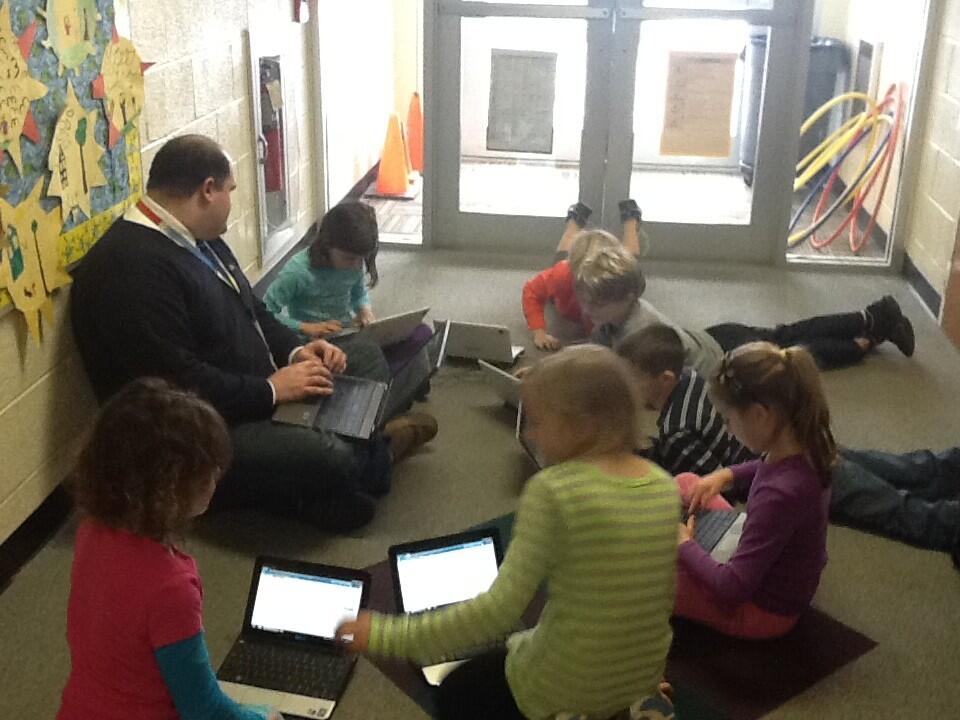When we discuss the purchase of technology, one of the main debates is typically over whether we will get enough student learning for our financial investment. As we know, a SMART board does not make a smart teacher. And putting a tablet or laptop in the hand of every child does not guarantee growth either. Realizing that this is an oversimplification of a somewhat complicated scenario, what I hear most often debated is not student readiness, but teacher readiness.The debate becomes a chicken or egg scenario. Do we buy the “stuff” first and then professionally develop our staff so they can use it with their students or do we try and build capacity, a tipping point, and then buy the “stuff” when people are ready?
We have come to assume that students will learn how to use the “stuff” pretty quickly. Just last week I supported some teachers who wanted to have their 2nd graders try their hand at blogging about an upcoming trip to the zoo. I pulled a group of 8 students into the hallway and we sat on the floor exploring Kidblog together. Before I could even begin to give them explicit directions, many of them had already figured out the wysiwig tools and were changing font colors, font size, and underlining text. This led to a great discussion about how and when to use those tools for effect in blogging.
When I asked the students how many of them had seen Kidblog before, none of their hands raised. When I asked them how many of them had ever seen the bold, or italic, or underline tool before, only 3 of them raised their hand. I didn’t have to “teach” them how to make text bold, italic, and underline. I did need to help them explore why they might use those tools within their text. Despite a relatively new environment, the students were willing to play. They weren’t worried about breaking anything, and they weren’t worried about failing miserably. They simply wanted to see what they could do with the tool.
As educators, we have a lot to learn from these second graders. We are sometimes given many “gifts” in the form of new hardware, software, curriculum materials, and even professional learning opportunities. And yet, for some of us, instead of opening those gifts up and playing with them, pushing them to their limits, and seeing what we can do with them, we often let them sit in a box (literally and/or metaphorically) until someone gives us the proper training on how it works. I’m not sure where we as adults lost our sense of play and our fearlessness. I’m not sure when we became so complacent and unwilling to take learning into our own hands either.
We also need to recognize that the technologies our students might innately come to understand are not necessarily going to be used academically or appropriately out of the box either. We must also remember that not all kids have the same experiences or access at home as they do at school. In the end, our responsibility becomes less about learning how to make it work and more about how to make it work for learning.

I experience this almost daily with my class using their iPads. They figure things out on their own and then teach each other what they've discovered. They are more enthusiastic and engaged when the learning is in their own hands.
ReplyDelete